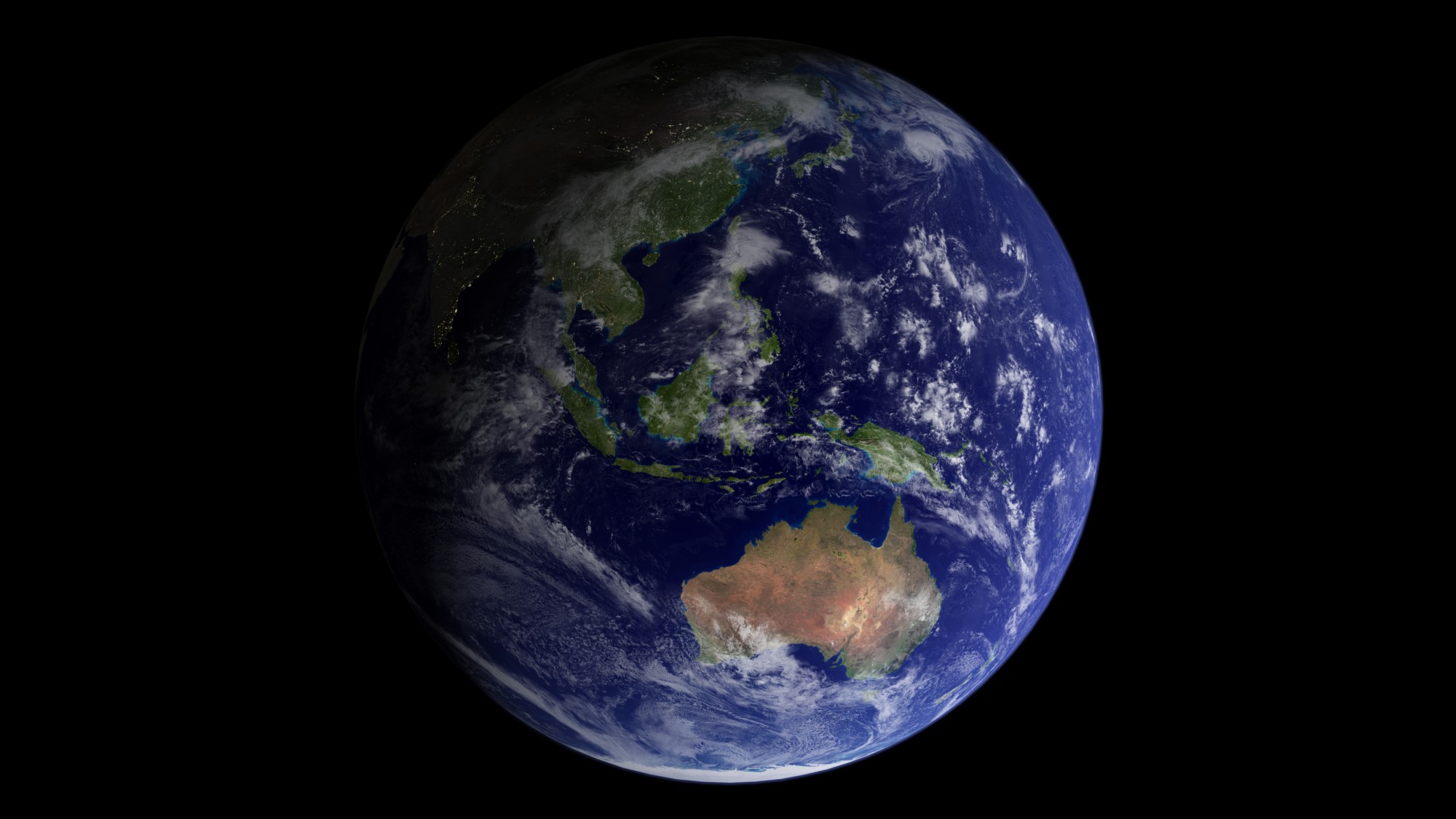NASA highlights climate research at opening of inaugural summit
The agency's research on our own planet has never been more vital.

Everyone knows that NASA studies planets. But although the agency has long collected data on our home planet, it's now redoubling its efforts in the face of climate change.
NASA has been collecting data about Earth since the 1960s, expanding that effort when they launched the first Landsat satellite in 1972. Now, the agency is redoubling its efforts to not only observe our planet, but to also develop technology that could help us lessen climate change and adapt to its impacts. During a panel on Dec. 8 that opened the agency's inaugural climate summit, NASA administrators and scientists talked about some of the work being done to research and address climate change.
"What we know from observations made on and above the Earth's surface is that our planet's climate is changing," Kate Calvin, NASA's chief scientist and senior climate advisor, said during the event. "The last eight years were the warmest since modern record keeping began."
Related: 10 devastating signs of climate change satellites can see from space
Research, much of it done using NASA data, has shown that climate change is triggering a whole host of effects, including more extreme weather patterns, melting sea ice and rising ocean levels. This climate change stems from the release of greenhouse gasses like carbon dioxide and methane, which humans produce when we burn fossil fuels to power cars and planes and generate electricity, among other modern necessities.
But even with all that data, NASA has plans to provide an even more detailed look at our planet. In collaboration with CNES, France's space agency, NASA launched the Surface Water and Ocean Topography (SWOT) mission on Dec. 16. The mission will be the most sophisticated to date to document our planet's surface water, measuring not only sea levels but also the levels of lakes, rivers and reservoirs, as well as data on ocean currents. The mission is a continuation of a long collaboration between NASA and CNES to observe global surface water height, said Karen St. Germain, NASA's director of Earth science.
"SWOT will also give us the levels of water in reservoirs and lakes and rivers," she said during the panel, "And also for the first time from space, we'll be able to see depth of flooding, not just extent of flooding, from space."
Get the Space.com Newsletter
Breaking space news, the latest updates on rocket launches, skywatching events and more!
The Tropospheric Emissions: Monitoring of Pollution (TEMPO) mission, due to launch in March 2023, is another way that NASA is doubling down in its efforts to collect data on pollution and the sources of climate change on Earth.
"This will be the first space-based instrument to monitor major air pollutants across all of North America during every daylight hour at a very high spatial resolution," NASA Administrator Bill Nelson said during the panel.
NASA also oversees aeronautics research — the study of flight, aviation and the atmosphere. Aviation currently contributes about 3.5% of global greenhouse gas emission, said Bob Pearce, NASA's associate administrator for aeronautics research, and that percentage is only growing.
Planes have long been adapting technology to increase their efficiency, he said, with aircraft today 80% more energy-efficient than they were in the 1960s. But Pierce said that the aviation industry has committed to become carbon neutral by 2050, which will require rapid development and adoption of new technologies, like those NASA helps develop.
Technology that NASA researchers develop for space exploration can also have useful applications on Earth, said panelists. For instance, producing nuclear energy on the moon would allow astronauts to power their equipment without relying on sunlight or another power source, Jim Reuter, NASA's associate administrator for space technology, said during the panel. But similar power plants could also be a valuable source of renewable energy on Earth.
In addition, Calvin said that research on how to grow crops aboard the International Space Station using minimal resources could help farmers grow crops on Earth in similar ways, reducing the amount of fertilizer that ends up polluting rivers and lakes.
Following the SWOT mission, other Earth-centered missions, like NASA-ISRO SAR (NISAR), a radar-mapping satellite project with India, and Plankton, Aerosol, Cloud, Ocean Ecosystem (PACE), a carbon-tracking satellite, both scheduled to launch in 2024, will collected detailed data on our planet's surface, hazards and natural disasters, ocean biology and clouds.
Farther in the future, NASA also plans to create an Earth System Observatory — a new fleet of satellites that will provide a holistic view of the Earth in unprecedented detail, St. Germain said. Although the missions are only beginning their development, she said, future missions combined with data from SWOT, PACE, and NISAR, the Observatory’s first mission, will give us a new, comprehensive view of our planet.
NASA also plans to create an Earth Information Center — a sort of "mission control" for our planet, Nelson said, making detailed data on Earth widely available and accessible. This data is vital, he said, as it becomes increasingly clear that our climate has already begun to change.
"It's indisputable what's happening," he said. "It underscores the need for bold action to safeguard humanity's future."
Follow us on Twitter @Spacedotcom and on Facebook.
Join our Space Forums to keep talking space on the latest missions, night sky and more! And if you have a news tip, correction or comment, let us know at: community@space.com.

Rebecca Sohn is a freelance science writer. She writes about a variety of science, health and environmental topics, and is particularly interested in how science impacts people's lives. She has been an intern at CalMatters and STAT, as well as a science fellow at Mashable. Rebecca, a native of the Boston area, studied English literature and minored in music at Skidmore College in Upstate New York and later studied science journalism at New York University.









